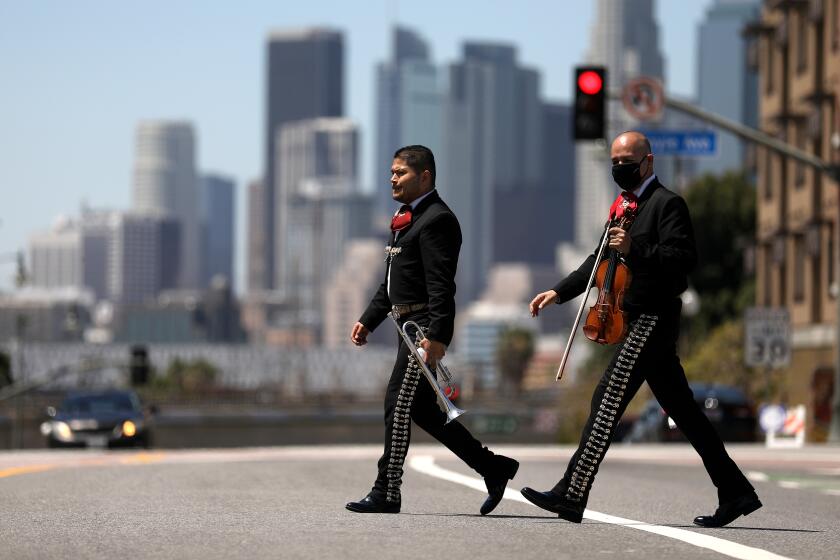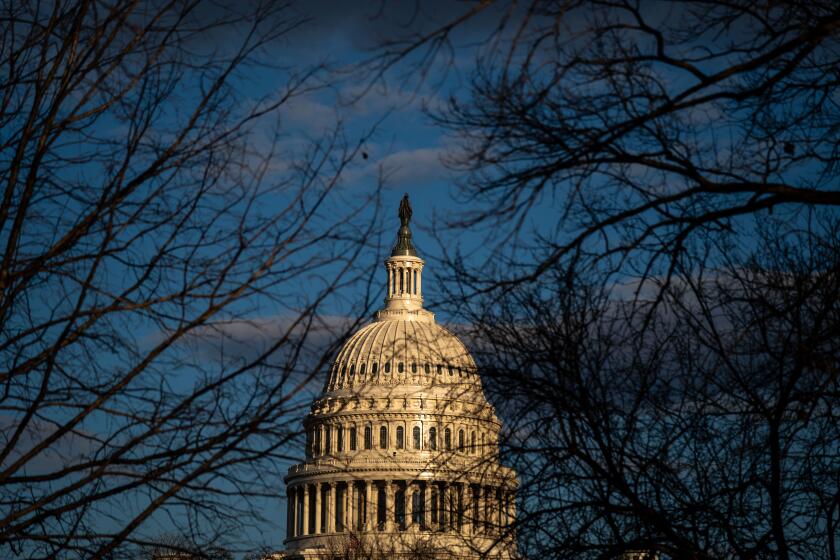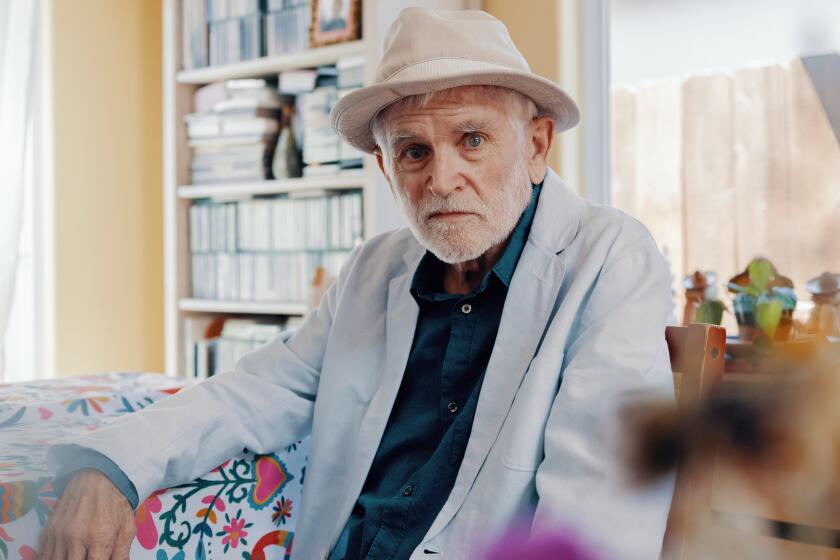Extreme makeover? Two L.A. council members could see huge changes to their districts
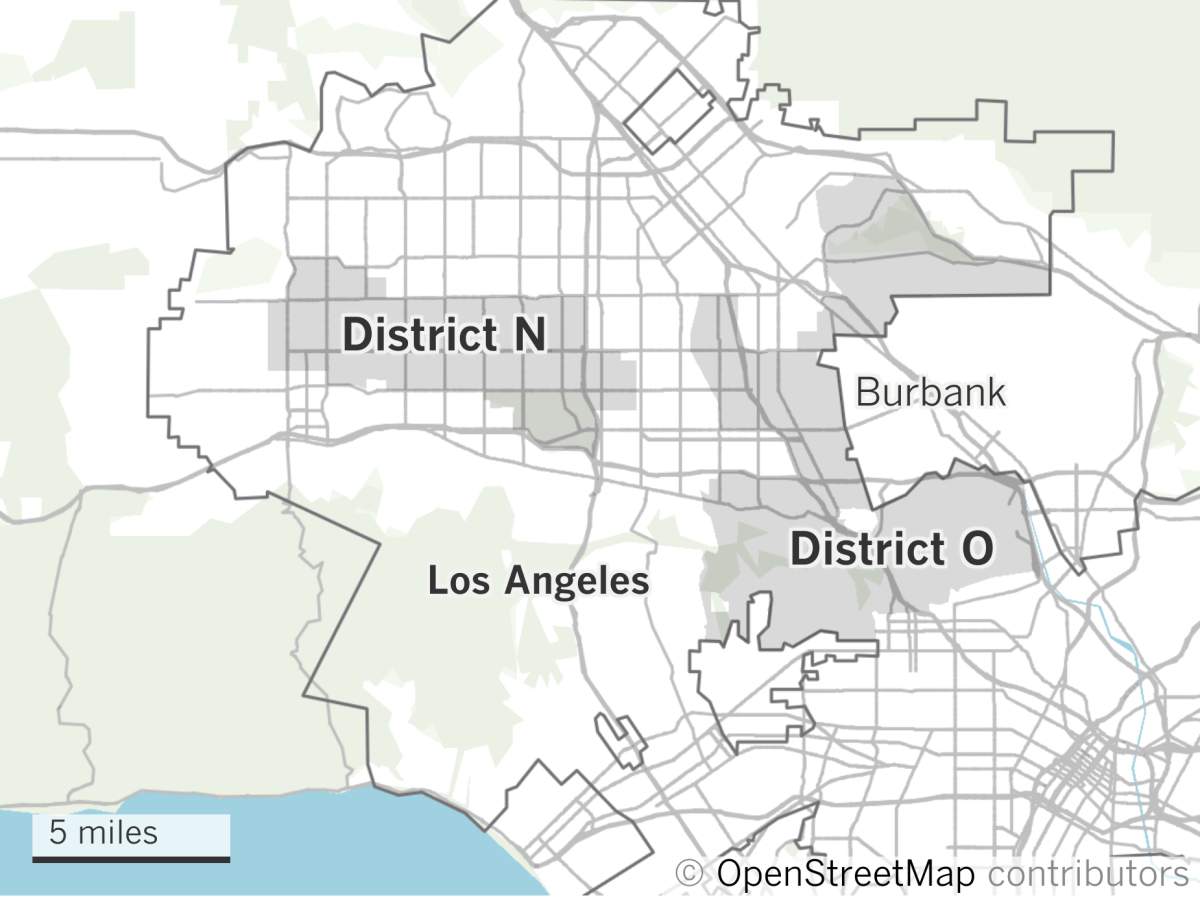
- Share via
When Los Angeles Councilwoman Nithya Raman won her campaign for city office last year, her victory was historic on multiple levels.
Raman ousted an incumbent — a rare event at City Hall — and delivered an enormous win to some of the city’s most politically progressive activists. She also received more votes than any council candidate in city history, in part because the contest coincided with the presidential election.
Now, after less than a year in office, Raman could see much of of her Hollywood Hills district disappear — redesigned dramatically as part of the city’s once-a-decade redistricting process following the release of U.S. Census data.
The Los Angeles City Council Redistricting Commission, a group of political appointees that’s redrawing the 15 district boundaries, is weighing a proposal that would slice off many of the neighborhoods that made up Raman’s district: Sherman Oaks, Hancock Park, Miracle Mile, Park La Brea and portions of Silver Lake, where she resides. The redrawn district, if approved, would push north into the San Fernando Valley, reaching the semi-rural horse country of Shadow Hills.
In recent days, Raman has begun arguing that the proposal, known as Draft Map K2, would silence the voices of the tens of thousands of people who elected her last year.
“This map erases the results of an election and denies Angelenos the representation they voted for less than a year ago,” she said in a statement.
The census results — declining numbers on the Eastside, increases in the Valley — will create challenges for the panel drawing new maps of the City Council’s 15 districts.
The future of Raman’s 4th Council District is just one of several contentious issues before the commission, which must submit a final draft map to the council by the end of October.
Activists in Watts have been pushing for their neighborhood to be moved out of Councilman Joe Buscaino’s district and into the one represented by Councilman Curren Price. In another section of South Los Angeles, community leaders want to move USC out of Price’s district and into the one represented by Councilman Marqueece Harris-Dawson.
The commission is scheduled to meet Thursday to cast a vote on a draft map before going out to the public for comment. But it is already facing criticism from activists, neighborhood leaders and some of the council members who will ultimately decide whether to approve their proposals.
Fred Ali, who chairs the redistricting commission, cautioned that many decisions have yet to be made. The commission, he said, will also consider an alternative map this week — one supported by Raman — that would push her district south, giving it all of Koreatown.
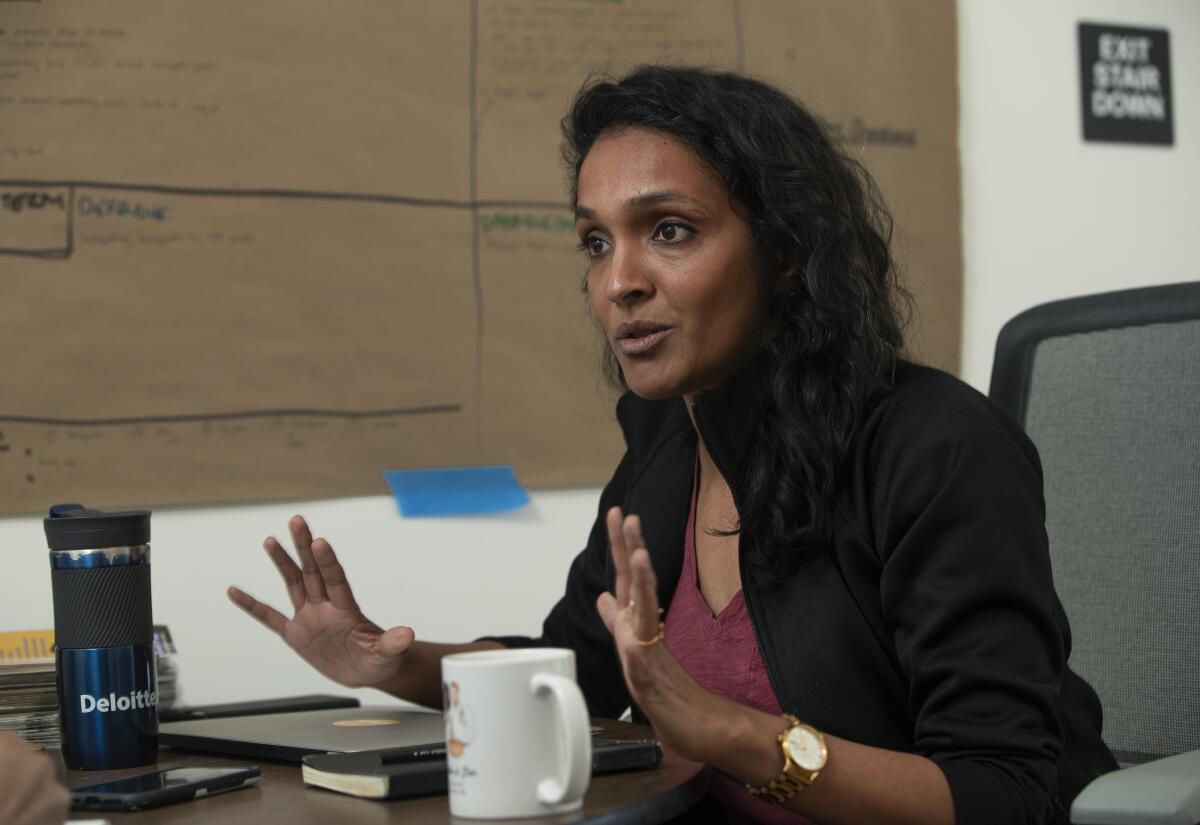
“Keep in mind, this process is not over,” Ali added. “All this is going to be subjected to public testimony. And if I’ve learned anything about this redistricting process, it’s that things change.”
Ali defended the commission’s work so far, saying that unlike previous decades, line-drawing decisions are being made not behind closed doors but in public — viewable on Zoom during each of the panel’s lengthy evening meetings.
The commission, he said, is basing its decisions not on where a politician lives but on U.S. Census data, public input and on proposals aimed at keeping “communities of interest” together in the same council district.
“This commission has taken very, very seriously the testimony it receives, in combination with the data,” he said.
Redistricting is a hugely significant process in Los Angeles, determining which valuable assets — downtown, Koreatown, Exposition Park and countless other places — wind up in each district. In L.A., each district must have around 260,000 people, based on the latest Census figures.
A final set of boundaries must be approved by the council in time for it to go into effect in January.
For now, one of the biggest sources of controversy involves the district lines being drawn in the San Fernando Valley, which makes up nearly 40% of the city’s population. Commissioners have been working to ensure the Valley would have five and two-thirds council districts. But those changes have repercussions for other regions of the city.
If the commission approves the K2 draft map, roughly three-fourths of the population in Raman’s district would be shifted to the districts of other council members, according to an analysis prepared by her office.
The changes could be even more dramatic for Councilman Paul Krekorian, a veteran politician based in the East Valley.
Under the draft map, Krekorian’s entire district would be moved into neighborhoods he does not currently represent — Winnetka, Lake Balboa and Canoga Park, among others. That would require Krekorian to acquaint himself with those communities’ resources, neighborhood groups and political issues.
Like Raman, Krekorian has three years left in his term. And like Raman, he argued that the commission’s draft map would erase the choices of the people who elected him just last year. The proposal also would disenfranchise his district’s Armenian community, warned Krekorian, the council’s first Armenian-American.
“I think [the commission] should go back to the drawing board and work on some of the many other options that are in front of them,” he said.
Although the commission has been meeting for 10 months, it received its Census data only in August. As draft boundaries have taken shape, critics have begun questioning whether the commission has been concealing critical information, using letters instead of numbers to identify each district on its proposed maps.
Raman and Krekorian spent part of the past week trying to determine which of them would end up in the portion of the map labeled District O — the one that reaches north to Shadow Hills — and which one would be shipped out to District N in Winnetka.
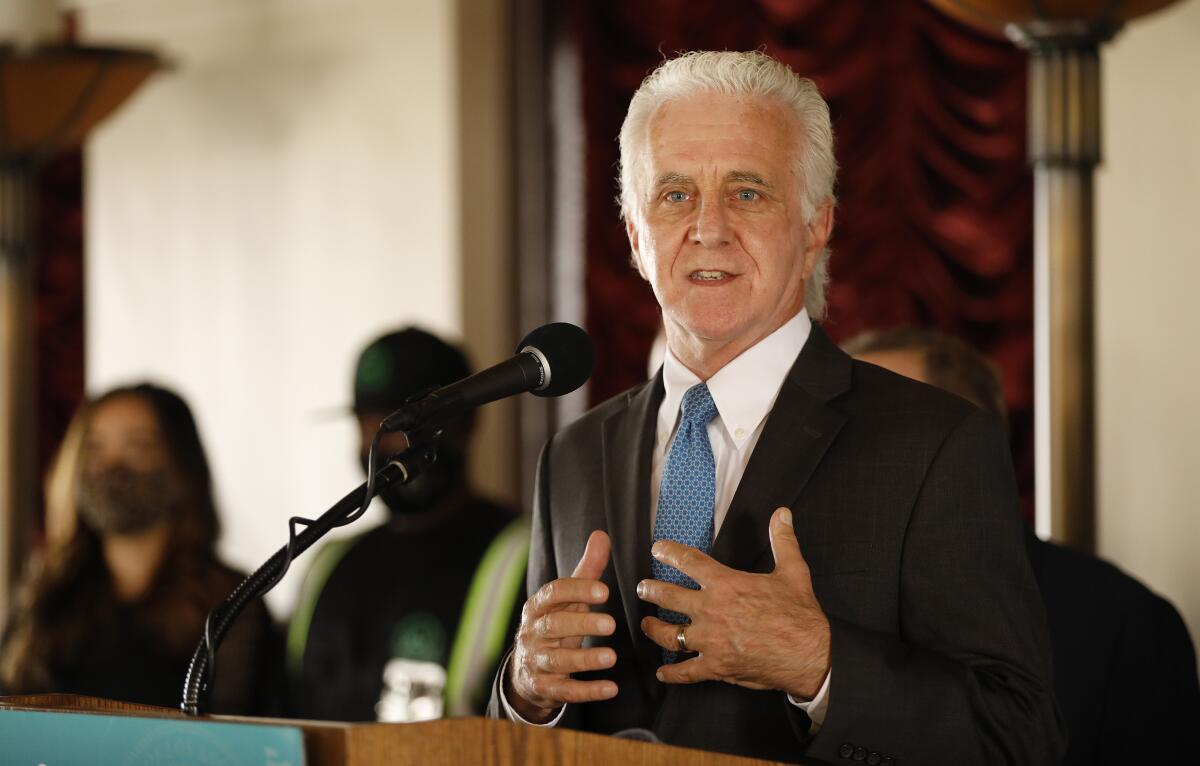
Ali said the commission chose to use letters to ensure that the panel focused on the needs of communities, not incumbent council members.
District numbers will be added at Thursday’s meeting, Ali said. Still, he acknowledged that the commission might have waited too long to change its maps from a lettering system to the numerical one familiar to Angelenos.
California will lose a House seat for the first time in its history because of sluggish population growth over the last decade.
“In retrospect, maybe converting letters to numbers would have been easier for the public to understand. I see that now,” he said. “But there was absolutely no intent here to hide anything.”
Raman, who has touted her tenant advocacy work as an elected official, said last week that she welcomed the idea of taking on a greater share of Koreatown, which has a high concentration of renters. Commission staffers, on the other hand, have argued that their proposed boundaries for her district make sense — creating an area focused on the entertainment industry.
Meanwhile, the commission’s work has drawn other complaints.
Commissioners said they had made it a priority to unify neighborhoods long spread across multiple districts. Yet the proposal under consideration divides a number of neighborhoods, such as Highland Park and Glassell Park, into multiple districts.
While those neighborhoods have been split, the commission has worked to keep the vast majority of downtown in the same district — a huge part of the city represented by Councilman Kevin de León, who is now a candidate for mayor.
Rob Quan, an activist who lives in Highland Park and has served as a redistricting watchdog, said that move will benefit De León in next year’s campaign. Downtown, he said, is a lucrative source of campaign donations for council and mayoral candidates.
“I think it’s politically driven to provide a very, very nice reliable piggybank for his mayoral run,” he said.
Jennifer Barraza, De León’s chief of staff, called that allegation a “conspiracy theory” not grounded in fact. For more than a year, downtown stakeholders pressed De León to ensure that the area is kept together in his district, she said.
“This is a very clear community mandate, and it has nothing to do with running for mayor or reelection or anything,” said Barraza, who also worked on De León’s council campaign last year. “Frankly, the councilman knows how to raise money. He’s done it for decades, district or not.”
More to Read
Sign up for Essential California
The most important California stories and recommendations in your inbox every morning.
You may occasionally receive promotional content from the Los Angeles Times.
